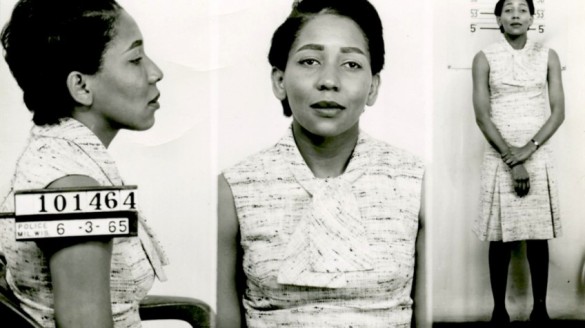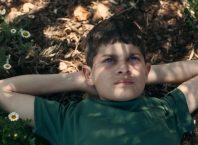Death and taxation, they say, are the two certainties in life. I’d add one more thing to the list: our enduring fascination with the intrigues and implausibilities of crime, and the people behind them.

Exhibit A for the prosecution: The Life and Crimes of Doris Payne. When we meet Doris, she is in her 80th year. Smart, softly spoken, with a twinkle in her eyes and a winning smile. But also with 9 convictions, spanning five decades and two continents, for jewel theft. And, when we meet her, on trial following the mysterious disappearance of a 1-carat diamond ring from a jewellery store in San Diego.
Doris’ back story – as she tells it, at least – is of much more than mere curiosity value. Her father was African-American, her mother Cherokee Native American. He didn’t think he deserved a wife as beautiful as her mother, Doris reminisces, “so he tried pretty hard to beat the pretty out of her.” But the pivotal event that put her on the road to crime – as she tells it, again – was an otherwise everyday story of petty prejudice. Her mother promised her a wrist watch for working hard at school, and took her to a jewellers to make good on her promise. The jeweller was solicitous at first, but when a White customer entered his shop, turned his attention elsewhere. “He didn’t want to be seen being polite to a little black girl,” Doris says. But then, she still had a watch on her wrist. If she walks to the door and waves with the watch, she muses, he’d be all over her in a second.
Power, they say, can go to one’s head like new wine. With time Doris honed her act, teaching herself the delicate art of sleight-of-hand and distraction. There was also the issue of confounding expectations. No-one, she argues, expects to see a well-dressed and well spoken black woman shopping for jewels worth tens of thousands of dollars. All her theft, she argues, is merely another way of socking one to The Man.
One needn’t go too far into the cognitive dissonance involved in making this argument stick, and for as long as Doris has managed. An intriguing film, The Life And Crimes… is occasionally let down by what feels like a deliberately low-budget vibe – think Law and Order rather than, say, Ocean’s 11 – but is certainly worth watching, even if one risks having one’s credulity tested as much as Doris’ trial judge.

Whilst on the subject of testing credulity: as Exhibit B for the prosecution, I produce the perplexing life story of John Wojtowicz. Garrulous, vulgar and very, very funny, Wojtowicz has the rare honour of having been portrayed by Al Pacino in an award winning film. As the Vietnam vet who abandons his family to shack up with a pre-op transsexual, and then tries to rob a bank in Brooklyn, to pay for his lover’s sex-reassignation operation. As they say, you just couldn’t make it up.
Wojtowicz and his bank-robbing adventures were at the centre of Sidney Lumet’s 1975 film Dog Day Afternoon; The Dog is a fuller portrait of his life and times, entertaining but at times somewhat distracted. Wojtowicz – Dog was a nickname bestowed upon him for reasons too lurid to go into here – is a documentarian’s dream. Forthcoming and unabashed, he has no interest in the nuances of an interior life, sharing every detail of his complicated back story with relish.
It might be this is the principal problem with The Dog, directed by Allison Berg and Francois Kerauden. With the wealth of material at their disposal, they doesn’t quite manage to keep their storytelling in disciplined shape. But where it falls short on substance, it is immensely rich in atmosphere. Almost by accident, Wojtowicz found himself at the epicentre of the nascent gay rights movement of early 70s New York. And this, perhaps, is why a routinely botched – and how – bank robbery became a cause célèbre, with crowds gathering to cheer and jeer the protagonists as a hostage situation drew itself out to a tragic conclusion. LBGT didn’t have a place in the lexicon and imagination of early seventies New York; I suspect that if The Dog had kept this, rather than the (admittedly) entertaining Wojtowicz (and his mother) at the centre of the film, the end product would have been more rounded and engaging.
But all this is about our fascination with crime. Entertaining as they may be, neither The Dog nor The Life and Crimes of Doris Payne have very much to say about crime being the third certainty of human existence. For that, I produce Exhibit C for the prosecution. The Galapagos Affair: Satan Came to Eden, a tale of murder, mayhem and derring do in what was supposed to be an idyllic intellectual paradise.

Dr Friedrich Ritter and Dore Strauch emigrated from Germany to the Galapagos Island, part of Ecuador, in the early 1930s. Ritter was a devotee of Nietzsche – Will to power, enlightenment through suffering, that kind of stuff. Dore, who suffered from multiple sclerosis, was in thrall to him and his (self-bestowed, as far as we can tell) moral and intellectual superiority. Having sailed halfway across the world to escape humanity, they go a step further on arriving in the Galapagos, settling on the Island of Floreana, 60 miles from the next nearest island and completely uninhabited. To be fair, they weren’t seeking to create their own paradise; they were guided by the belief that solitude and self-reliance would make them better people.
Of course, this didn’t last terribly long. News of their Robinsoe Crusoe-like escapades reached the wider world in due course (it seems that their letters home were opened and leaked to the press), and not long after they were joined, unwanted and uninvited, by the Wittmers – Heinz and Margret, Heinz’s sickly teenage son and Margret five months pregnant. Friedrich was annoyed, Dore – who, as we learn from her letters, was suffering from the strain isolation put on the relationship with Friedrich – unimpressed.
For a while, the two families lived in an uneasy truce, until – and without warning – a tempest swept across the Island. A Baroness, actually. Flamboyant and combustible, the Baroness Von Wagner was accompanied by not one but two lovers, and had grand plans of building an idyll for tourists on the island. Which was as far from Dr Ritter’s initial dream as it is possible to get.
Satan Came to Eden, directed by Daniel Geller and Danya Goldfine, reconstructs through letters written by the principals and fortuitously available archive footage the building of the perfect storm. All the ingredients were present: misanthropy, ideology, deprivation and the (at times self-imposed) lack of material comforts, an inhospitable climate and good-old fashioned human frailties. You know, jealousy and covetousness, even hints of adulterous behaviour (except with the Baroness, with whom it wasn’t a hint).
Someone dies: Nietzsche never had much to say about who-dun-its, as far as I recall. Satan Came to Eden does use the material to hand very well, but the rather muddies the pure waters somewhat by interpolating the historical narrative with the reminisces of other old-timers on the Galapagos about life on the edge of the world. A strong cast, including Cate Blanchett and Connie Nielsen do the voice-overs, and the directors wisely resist the all too common temptation to editorialise or sensationalise; it is solid filmmaking, and I think shores up my argument, about crime being the third big certainty, very nicely.
The Galapagos Affair: Satan Came to Eden (2013)
Directed by Daniel Geller and Danya Goldfine
120 minutes, English & Spanish w. English subtitles
The Dog (2013)
Directed by Allison Berg and Francois Kerauden
100 minutes, English w. English subtitles
The Life and Crimes of Doris Payne (2013)
Directed by Kirk Marcolina and Matthew Pond
74 minutes, English w. English subtitles
Screening dates and times, as well as tickets, may be found on the Docaviv 2014 website.





